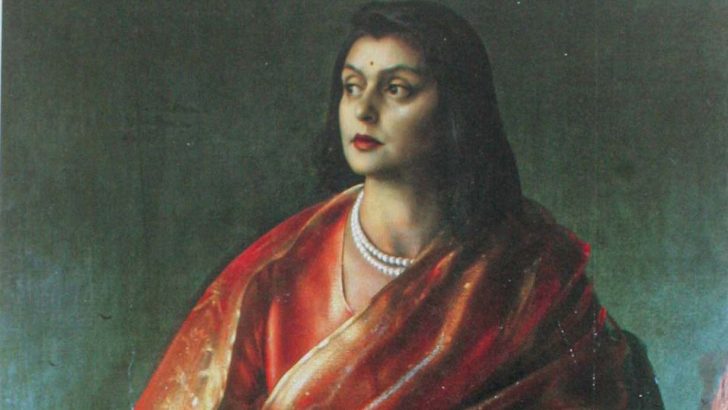A Princess Remembers: The Memoirs of the Maharani of Jaipur
by Gayatri Devi with Santha Rama Rau (Rupa & C, New Delhi, 2008; copies of other editions are available second-hand online from €10.00 approximately)
These extraordinary memoirs of an eminent Indian princess, who achieved great electoral success in later life, present a fascinating account of India in the twentieth century – but from an unusual point of view.
It comes, not from the Congress Party/Nehru family point of view, but from what the author Rosita Forbes in 1939 called “the India of the Princes”.
For western readers, especially those (like Irish missionaries) who have anxieties about the decline of tolerance under the present ruling regime, it will provide those, for instance, anxious about the fate of Christian and other minorities, with a totally different viewpoint than that of prime minister Narendra Modi.
They provide an ‘insider’s’ view of that ‘other India’ and is all the more important for that reason; the ‘insider’ being the third wife of Jai, the Maharani of Jaipur.
Written from an upper-class and privileged perspective, the memoirs offer a profound insight into the unique, enduring and patriarchal character of Indian society and the rarefied environment in which the region’s royal and princely families conducted their lives.
Gayatri Devi was born into a royal family in Cooch Behar in northwest India on May 23, 1919. She received her early education in the palace and was then sent to the school managed by Rabindranath Tagore, the celebrated poet and Nobel Prize winner, to experience “the best of traditional Indian culture”. Later she attended a girls’ college and a secretarial school in London. She completed her education at a finishing school in Lausanne in Switzerland.
A few days before her twenty-first birthday in a lavish wedding ceremony on May 21, 1940 she became the third wife of Sawai Man Singh II. The couple had one child, Prince Jagat Singh. Although it was an arranged marriage, they had a happy life together until he died in June 1970.
Backdrop
The maharani narrates her memoirs against a backdrop which could not be more interesting. There was Mahatma Gandhi walking across the Indian sub-continent preaching the gospel of non-violence. The National Movement for Independence was increasing its grip on the country and morphing into the Indian Congress Party of the Gandhis.
Meanwhile, the British authorities were attempting to retain some influence – if not some control – as the Raj ebbed to its demise. Then there was World War II during which India placed 2.5million men in the field, including the Maharaja of Jaipur, who was an officer in an Indian regiment. There was the Cold War during which the author’s husband was India’s ambassador to General Franco’s Spain. However, the issue which was of most concern to the maharani was the impasse between the government, led by Mrs Indira Gandhi, and the former rulers of the independent states, such as Jaipur. Mrs Gandhi’s government reneged on a formal agreement to properly compensate the rulers of those states for agreeing to have them incorporated into the national state. This prompted the maharani to become a leading figure in the Swatantra Party, one of India’s opposition parties, she won landslide victories at local and national elections and became one of Mrs Gandhi’s fiercest adversaries.
Arrangements
For some readers the most interesting section of the memoirs will be those describing the domestic arrangements and leisure pursuits of the Indian aristocratic families. They resided in palaces, some of which had more than 500 servants. There were the lavish celebrations of Hindu festivals and the presentation of ritualised public demonstrations. Big-game hunting was a feature of life: tiger-hunting, bear-hunting etc. and shooting parties. The author is pictured with her first tiger-kill at the age of 12! Sport also loomed large in palace life at Jaipur. While the maharaja was an internationally-renowned polo-player, the maharani was also, it seems, quite accomplished both as a horse-rider and polo-player.
Relationship
The author describes her relationship with the first and second wives of the maharaja and their extended families. They were almost as young as she was. She refers to the zenna. This was the area in the palace, where women from the princely families were required to reside. She explains the custom of purdah. This was the practice in India, whereby upper-class women were screened from public view and from men other than their husbands. She and her husband were unsuccessful in their attempts to eliminate the practice at Jaipur. However, she had more success in that regard when she established the Maharani Gayatri Devi School, where the girls received the same kind of education as she had in Europe.
An iconic beauty, following her husband’s death she featured in fashion magazines in Europe and the US. Emerging from those memoirs is a strong, independent-minded, multi-talented woman to whom we are greatly indebted for a magnificent account of her life and times.


 Gayatri Devi, the Maharani of Jaipur, in regal style.
Gayatri Devi, the Maharani of Jaipur, in regal style. 